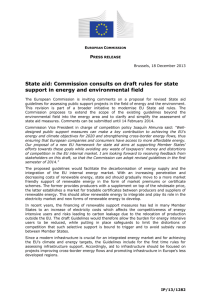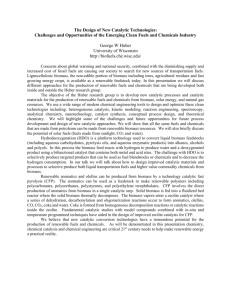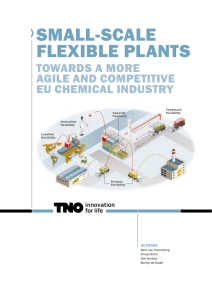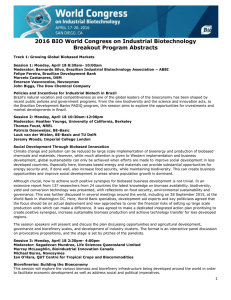lecture abstract template - North Dakota State University
advertisement
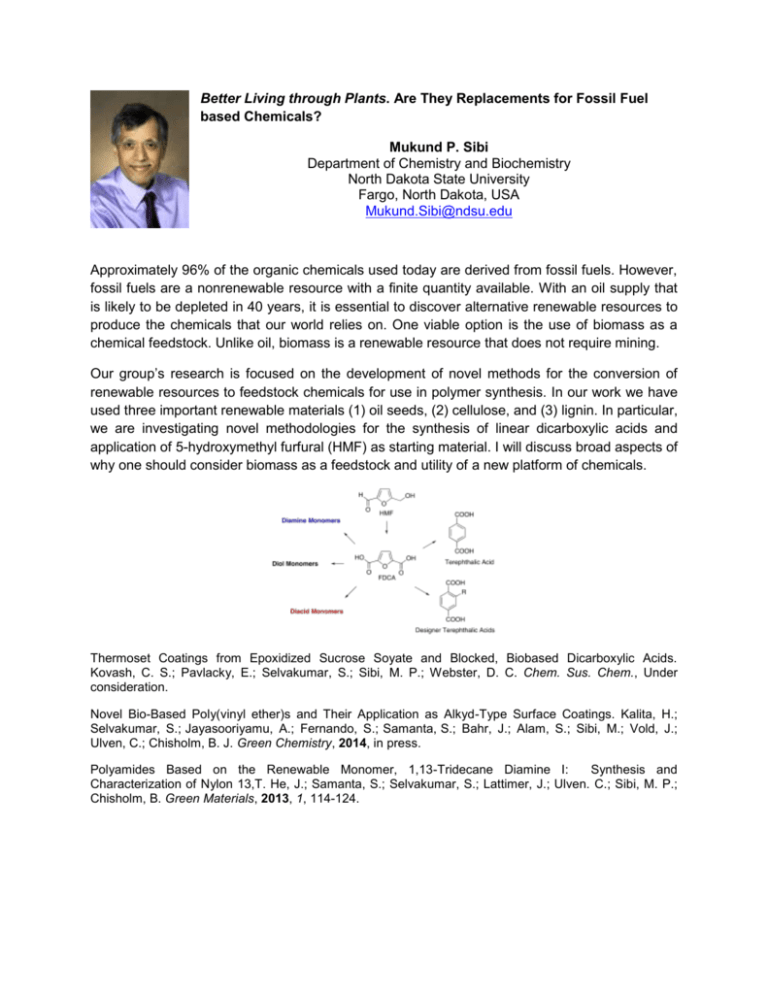
Better Living through Plants. Are They Replacements for Fossil Fuel based Chemicals? Mukund P. Sibi Department of Chemistry and Biochemistry North Dakota State University Fargo, North Dakota, USA Mukund.Sibi@ndsu.edu Approximately 96% of the organic chemicals used today are derived from fossil fuels. However, fossil fuels are a nonrenewable resource with a finite quantity available. With an oil supply that is likely to be depleted in 40 years, it is essential to discover alternative renewable resources to produce the chemicals that our world relies on. One viable option is the use of biomass as a chemical feedstock. Unlike oil, biomass is a renewable resource that does not require mining. Our group’s research is focused on the development of novel methods for the conversion of renewable resources to feedstock chemicals for use in polymer synthesis. In our work we have used three important renewable materials (1) oil seeds, (2) cellulose, and (3) lignin. In particular, we are investigating novel methodologies for the synthesis of linear dicarboxylic acids and application of 5-hydroxymethyl furfural (HMF) as starting material. I will discuss broad aspects of why one should consider biomass as a feedstock and utility of a new platform of chemicals. Thermoset Coatings from Epoxidized Sucrose Soyate and Blocked, Biobased Dicarboxylic Acids. Kovash, C. S.; Pavlacky, E.; Selvakumar, S.; Sibi, M. P.; Webster, D. C. Chem. Sus. Chem., Under consideration. Novel Bio-Based Poly(vinyl ether)s and Their Application as Alkyd-Type Surface Coatings. Kalita, H.; Selvakumar, S.; Jayasooriyamu, A.; Fernando, S.; Samanta, S.; Bahr, J.; Alam, S.; Sibi, M.; Vold, J.; Ulven, C.; Chisholm, B. J. Green Chemistry, 2014, in press. Polyamides Based on the Renewable Monomer, 1,13-Tridecane Diamine I: Synthesis and Characterization of Nylon 13,T. He, J.; Samanta, S.; Selvakumar, S.; Lattimer, J.; Ulven. C.; Sibi, M. P.; Chisholm, B. Green Materials, 2013, 1, 114-124.



